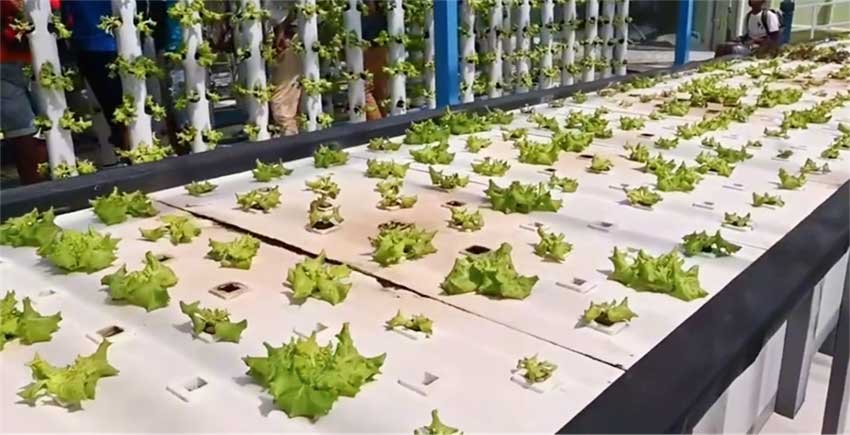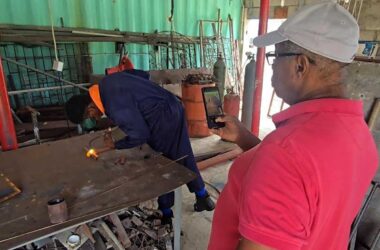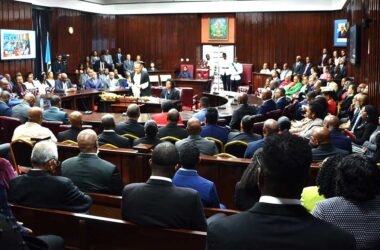
Saint Lucia is poised to establish the National Agriculture Innovation and Technology Center following the recent visit of a technical team from Guyana.
The Guyanese five-member technical team has completed the facility, marking a pivotal advancement in Saint Lucia’s agricultural modernization efforts.
This project signifies a collaborative initiative between the Government of Saint Lucia and Guyana, focused on implementing agriculture-technology adaptations and innovations, including greenhouses equipped with nutrient-filled hydroponic systems.
The Ministry of Agriculture confirms that this initiative will revolutionize Saint Lucia’s agricultural sector by merging sustainable practices with state-of-the-art hydroponic technology. This system provides a more efficient farming approach, critical for tackling challenges associated with the dry season.
Hydroponics minimizes water and fertilizer waste while ensuring optimal crop growth, establishing itself as an environmentally friendly and cost-effective alternative to traditional farming. The system is particularly advantageous for farmers with limited land space, enabling maximized productivity in compact areas.
With the completion of this facility, the Ministry of Agriculture is now equipped with a powerful tool to educate and demonstrate the substantial benefits of hydroponic farming to local farmers.
Lead Hydroponic Technician Carlio Benjamin asserts that this innovation will significantly enhance food security and economic resilience within the agricultural sector by utilizing less water and fertilizer while increasing productivity.
“We have completed the project, and it will greatly benefit the Saint Lucian people,” he stated.
Benjamin emphasized, “Hydroponics is not a new technique; it has been used for over 2,000 to 3,000 years. However, we have refined this technique by implementing what is known as Precision Agriculture. We are eliminating waste in fertilizers and particularly conserving water.”
For instance, he noted that over an area of approximately 22×100 feet, around 40 to 50 gallons of water would typically be needed daily for crops. With the hydroponic system, this requirement drops to every three weeks.
The system ensures that farmers can maintain a consistent production output without interruptions. The ‘two-tunnel’ greenhouses have a combined capacity to grow over 6,600 plants, with one greenhouse accommodating 1,425 plants and the other 1,200.
This advancement represents a transformative leap towards technology-driven farming in Saint Lucia, fostering increased efficiency, sustainability, and resilience in food production.
Benjamin further described the project as an “energy system” or a Nutrient-firm technique, where a thin stream of water runs beneath the plants. It is a recyclable system that spans 30 feet in length, using a pump to circulate water.
This technique generates oxygen for the system, ensuring optimal conditions with every parameter carefully monitored, and features filters to prevent any clogging or detrimental issues.
The successful completion of this initiative underscores the strengthening agricultural ties between Saint Lucia and Guyana, showcasing regional cooperation in adopting advanced farming technologies.
As operations commence at the facility, it is set to serve as a benchmark for future agricultural projects in the region, empowering farmers with innovative techniques to boost food production and sustainability.
Additionally, Benjamin noted that this innovative system was effectively introduced to a group of school students.
Last year, the Agricultural Engineering Services Division (AESD) took significant strides in imparting innovative Agricultural Technology to the next generation of agriculturists. Their commitment to fostering the future of agriculture is evident through various educational initiatives, including firsthand experiences for young learners.
Aquaponics, a groundbreaking agricultural approach, integrates two essential components: raising fish in tanks, known as recirculating aquaculture, and cultivating plants without traditional soil through hydroponics.
In this innovative system, the nutrient-rich water produced from fish cultivation serves as a natural fertilizer for the plants, while the plants function as natural filters, purifying the water for the fish.
This captivating method not only introduces students to sustainable and efficient agricultural practices but also emphasizes the significance of interconnected ecosystems and the potential for responsible food production.
Through such engaging educational interactions, AESD is determined to nurture a new generation of agricultural visionaries who will play a pivotal role in the future of farming and environmental stewardship.
[R.A].













